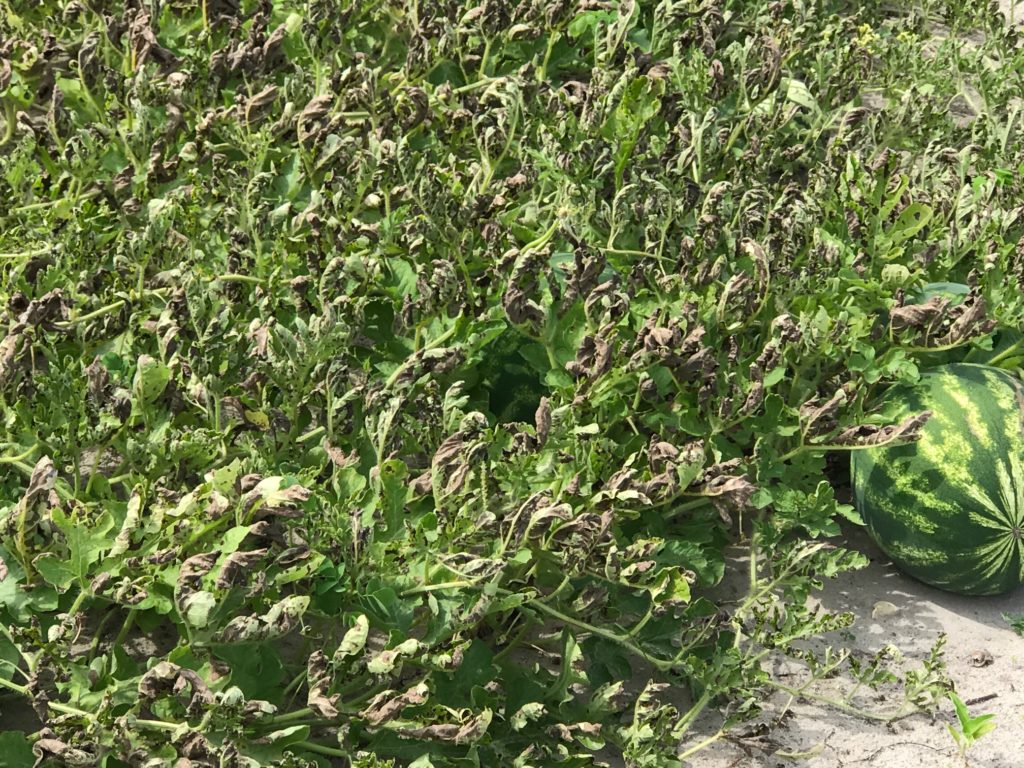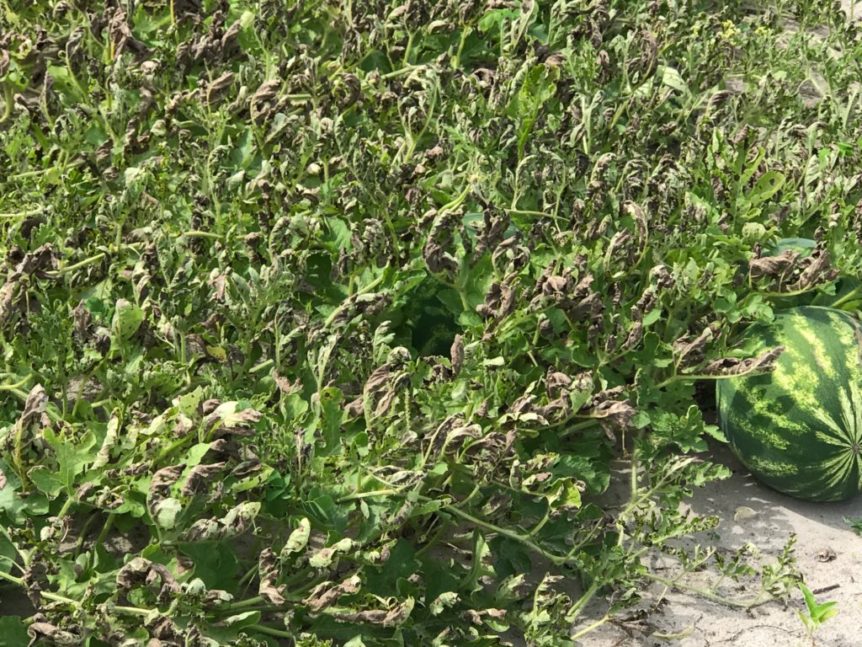
Downy mildew disease was observed in North Florida watermelons and South Georgia watermelons last week.
Bob Hochmuth, University of Florida Institute of Food and Agricultural Sciences (UF/IFAS) Regional Specialized Extension agent in Live Oak, Florida, confirmed in an email that downy mildew was confirmed in the southern part of the Suwannee Valley.
He also reported that Ty Torrance, University of Georgia Cooperative Extension vegetable agent for Colquitt, Tift and Worth counties, reported downy mildew in a watermelon field in Tift County.
Hochmuth emphasized that the downy mildew infection in both Florida and Georgia is very aggressive.
“It is unusual to have the situation where downy is found as far apart as southern Suwannee Valley all the way to Tift County,” the email read. “Therefore, it is likely the entire Suwannee Valley is at risk. We do want everyone to have a heightened alert and to intensify scouting when we indicate alerts for any of these diseases or other pests. Our intent is to make sure everyone knows what is happening in the region, so you can make the best decision possible on your own farm.”
Downy mildew was first confirmed last year on May 3, 2023.
Producers in the Suwannee Valley region should consider a plan to spray if they have not already initiated a program targeted at downy mildew. Growers should contact their Extension agent if they see areas of the field where plants appear blighted; dried up leaves sticking straight up in the mid part of the canopy.
The best fungicide choices, based on research trials, are Ranman, Orondis Ultra or Zampro and should be added to a broader spectrum mancozeb spray plus either Quintec, Rhyme or Procure, for the continued management of powdery mildew.










